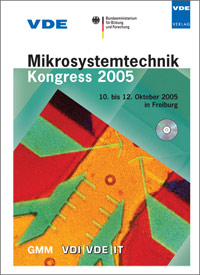Poly(ethyleneimine) – Poly(ethylene glycol) – graft copolymer – modified surfaces to prevent protein adsorption in micro-fluidic systems
Conference: Mikrosystemtechnik Kongress 2005 - Mikrosystemtechnik Kongress 2005
10/10/2005 - 10/12/2005 at Munich, Germany
Proceedings: Mikrosystemtechnik Kongress 2005
Pages: 2Language: englishTyp: PDF
Personal VDE Members are entitled to a 10% discount on this title
Authors:
Breisch, Stefanie; Stelzle, Martin (Naturwissenschaftliches und Medizinisches Institut an der Universität Tübingen NMI, Markwiesenstrasse 55, 72770 Reutlingen, Germany)
Abstract:
With the advent of BioMEMS and complex biological samples interacting with material surfaces, control of protein adsorption has become a critical issue. The unfavorably high ratio of surface to volume in microfluidic systems may result in the loss of a considerable fraction of analyte molecules due to unspecific adsorption onto surfaces. The effectiveness of surface coatings based on PEG-derivatives to reduce protein adsorption has previously been established [1-4]. The purpose of this research was to develop a versatile, easy-to-apply modification agent based on a PEI-PEG graft copolymer. PEI acts as a backbone with a fraction of the amino residues being derivatized with bis-epoxy-PEG while the rest of the amino groups may interact with negatively charged silanol groups, in effect immobilizing the copolymer at the surface. In this work the kinetics of the PEI-PEG coating process and the stability of coatings were investigated. The PEI/PEG ratio was optimized for lowest possible protein adsorption


